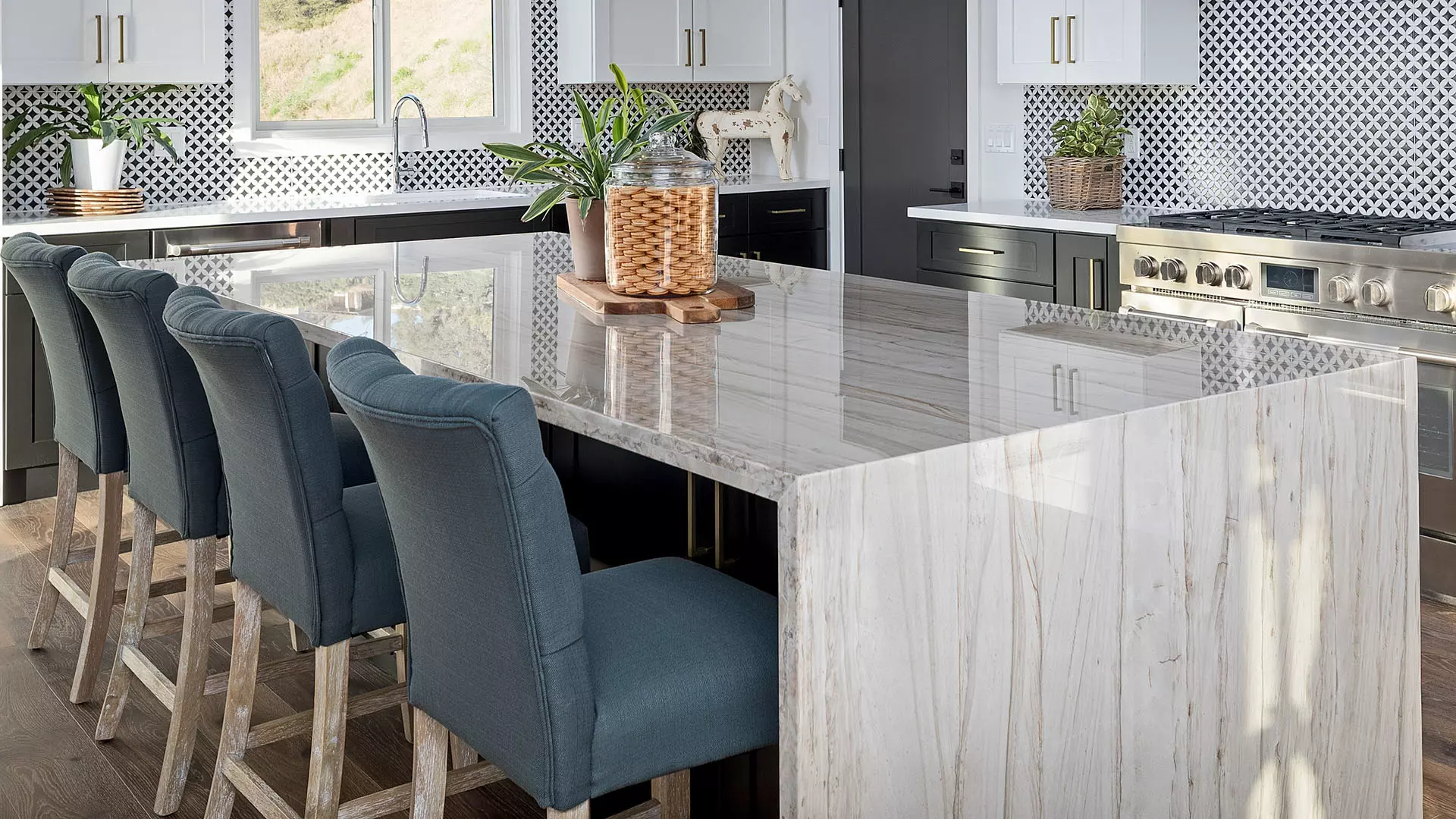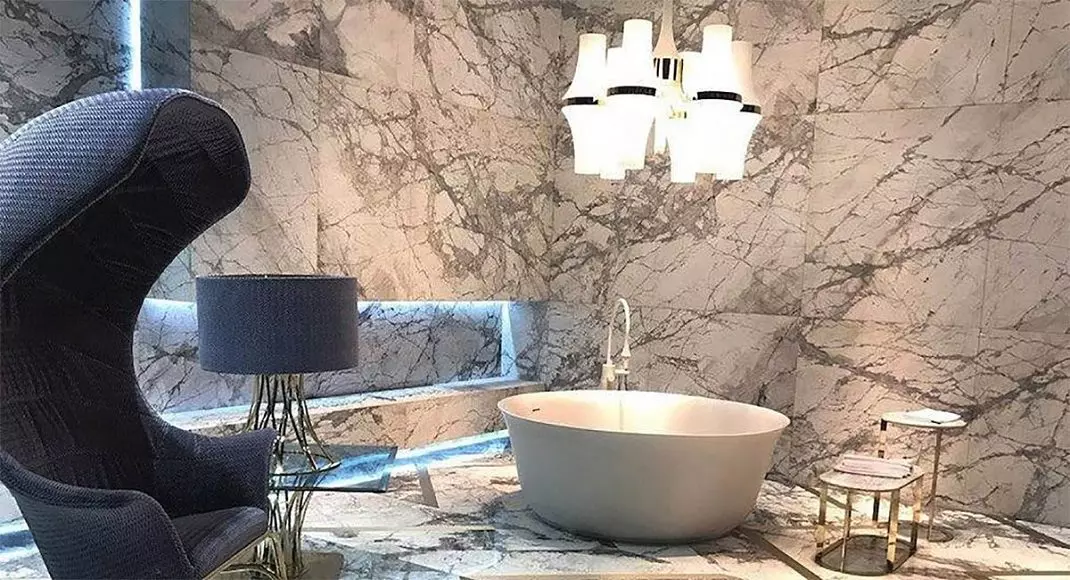2021 Bathroom Renovation Trends
Overheard—perhaps once too often: “We’re so excited. It’s got lots of space, and the floors are beautiful. Big rooms, plenty of light, a dream kitchen and . . . . Well, we’ll do something about the bathroom when we get time.” While remodeling this essential room seems daunting, a wealth of materials and decorating trends let you combine the efficiency you need to start the day at the top pace with luxurious and easy-to-care-for surfaces that transform it into an oasis of relaxation. The leading trends that will govern bathroom design right now and in the foreseeable future help you accomplish both goals, creating a beautiful room that will serve you well for many years.
KEEP IT SIMPLE
Whatever the style or materials, the clearest design constant is simplicity. Lines are clean, and shapes are classic. Geometric designs predominate, along with broad sweeps of subtle color and pattern. Mirrors, window-shapes, vessel-sinks, free-standing bathtubs, stools, benches, shelving and vanity sinks all display this geometric fixation. Stripped-down forms and tonal limits yield a color-block décor. A “floating” vanity, one of this year’s most-prized fixtures, illustrates the décor-technique clearly: The sink is a sparse rectangular block hung on the wall. Hardware is scarcely visible, and all plumbing is hidden from view. The rimless mirror above is round or rectangular, with no adornment. Tub and vessel-sink shapes are equally spare. Light fixtures are strictly tailored. Fabrics appear mainly as towels, not as decorative elements. Nothing trails, drapes or flutters.
Privacy is balanced with visibility and lots of light. Skylights and high or view-sheltered windows assure that much of this light is natural. Where possible, space is carved into simple zones, allowing more than one occupant and activity at a time. There appears to be a mild resurgence in free-standing tubs, although some are playfully located in bedrooms. In many bathrooms, however, tubs have given way completely to luxurious showers, glass-walled, metal-framed, with seating and separate lighting. Wet-room showers remain popular, although clearly some designers have developed reservations about managing the high humidity, room-temperature changes and ventilation challenges that accompany them.
What has departed is the notion that a multi-use bathroom functions best when areas are separated by partitions, platforms, alcoves or other types of architectural screening. Designers appear to agree generally that, whether the room is small or large, it serves users best when space is open and airy. One suspects that the increased amount of time many families spend in gyms, pools and other athletic facilities with common bathing and dressing areas may have had an impact on bathroom design, emphasizing usable space and efficient function over what may have become mere remnants of old-fashioned prudery. New bathrooms put high value on getting clean, quickly and thoroughly. Pet-parents will be happy to hear that designers now have access to specialized bathing equipment for dogs and permanent litter-box installations for cats. The spa movement has also offered lessons in the pleasures of healthy body care and physical indulgence. Newly popular renovations include heated floors and heated towel rods. Shower benches bridge the gap between soaking in the tub and stand-up efficiency.
MAKE IT BEAUTIFUL
This slight shift in views of privacy does not mean that homeowners renovating a bathroom need to resign themselves to Locker Room Redux! The spa effect, in particular, plays out in home décor with an amplified appreciation for the simple but sustaining beauty of natural materials. In a bathroom, the spa effect can produce many kinds of intriguing interplay between wood, stone, glass, metal, light, air and water. Materials often appear with simple finishes and little artistic detailing. Woods, for example, tend to appear in light or medium shades, with a glossy sheen rather than a highly reflective hard surface finish. Bamboo, fast-growing, easily-replenished and highly adaptable to humid conditions, appears in an increasing range of uses, including flooring, wall-paneling and trim. Glass panels may be lightly etched, stippled or textured to create privacy; most often, it is colorless or only slightly tinted. Metal appears sparingly, reserved decoratively for tailored, simply-styled drawer-pulls or door-handles. Here, buffed or low-gloss finishes may have given way to small touches of high-gloss Stone may be high-gloss, low-gloss or leather-finished. Solid-color slab counters are a first choice. Both natural and artificial lighting focus on serving personal needs and on showing off the inherent beauty of decorative materials.
COLOR IT NATURALLY
What is noticeably absent from new bathrooms is the old reliance on ceramic tile for nearly all surfaces. Where ceramic tile appears, it is more likely to be in large, square or rectangular paving-style floor tiles reminiscent of terra-cotta or stone than the smaller, high-gloss every-surface tiles. Vertically, ceramic tiles may provide a feature-wall of both color and pattern or texture. The old days, when ceramic tile carpeted floors, ceilings, walls, shower stalls, bathtub surrounds and vanities, are definitely gone, taking with them most of the rainbow colors that distinguished ceramic tile as much as its ability to fit almost anywhere. No longer does morning begin with a potentially frazzling shot of Mango Madness or Lavender Chiffon.
Today’s bathroom is most likely to be characterized by a monotone color scheme, and the most frequent color-scheme is likely to feature shades of gray. Hues range from near-white to near-black. Some designers favor pushing the spectrum on both ends, and contrasts are sharp. A black-white backsplash or feature-wall pattern can range from formal geometric to Mediterranean to the kind of free-form pattern created by natural mineral veining in stone. Just as often, color-schemes contain several less stringent levels of gray, from very pale to medium. Designers following this track will rely more on the natural reflective qualities of the stone than on high-gloss, polished finishes. With wood-tones for warmth, glass and metal for shine and a single choice of color, perhaps conveyed by textile selections, the room will appear both refreshing and tranquilizing.
A NATURAL FIT
Within these design parameters, stone counters are a perfect choice. An experienced designer or contractor can help you choose the best stone for the look and service you want. Although certain types of building stone have been used in bathroom construction and renovation for centuries, today’s choices extend considerably beyond your great-aunt’s marble-or-nothing point of view.
Two major criteria govern your choices: hardness and density. And, surprisingly, when these are your standards, your great-aunt’s marble bath doesn’t meet the mark. On scientific scales of hardness, marble scores as a relatively soft stone (a 4 on the Mohs Scale, with soapstone and talc scoring a 1 and diamond a 10). Marble is less hard than quartzite (low 7), granite (mid-7) and engineered quartz (high 7-8). It is hardness that determines durability. Harder stones are less prone to the cracking, scratches, scuffs and nicks of day-to-day surface-wear. Both hardness and density determine resistance to staining and corrosion, the other major wear-and-tear issues for kitchen and bath counters. Cosmetics present a number of staining issues, and using harsh cleaners can etch surfaces. Regular sealing can help keep counter surfaces looking new, and denser stones make cleanup of spills and stains more successful. A low-gloss finish or textured finish can help minimize wear-issues. The highly popular “leather” finish is just one of several new surfacing techniques that keep stone counters looking fresh even under heavy usage.
Stone is not just for counters. And stone need not always be used in solid-color form. The natural veining, swirls, speckles and other patterns formed by mineral deposits make both natural and engineered stones a spectacular way to resolve the tensions between plain and patterned, monotone and color, smooth and textured. Choose a strongly-veined stone for vertical wall panels, a tub surround or facing on this year’s most wanted feature, one or more “floating” vanity sinks. Contorted lines of black and copper-brown across a pale gray stone evoke images of tree-branches, flowing streams and mysterious maps. Choose a more subtly variegated stone to introduce even a wider variety of colors. Smudges of blues, greens and browns apparently just under a white surface add visual texture to an otherwise-austere décor scheme. Patterns in stone panels can suggest flowers, clouds or splashes of water and other natural objects in dream-like states, enhancing the spa-like sanctuary quality of your room.
WRITING IT IN STONE
How long are the design decisions you make in 2018 likely to stay up-to-date? In general, designers who follow the trends take a long view of the changes homeowners are making in bathrooms. Some of this view is practical: renovating a kitchen or bathroom is major work, involving plumbing and electrical decisions as well as construction and décor. Some of it is pacing: many of the new natural features available for bathroom décor have evolved slowly from warm-climate areas, where the relationships between indoors and outdoors are more varied and less structured than in colder climates. Bringing the pleasures of an outdoor rain-style shower indoors, for example, involves more than shower-head technology. Many designers expect the relaxing changes in bathroom design to remain popular as long as the natural materials on which they are based.


